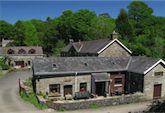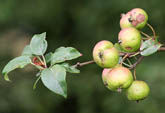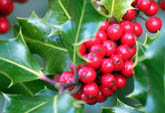Few things are as refreshing as a stroll through the Welsh countryside on a crisp, blue-skied day in January. The birds have nowhere to hide and the first hints of new life emerge from a winter slumber. The month was named after the Roman God Janus (Latin for door), who had two faces which allowed him to look both backwards into the old year and forwards into the new one at the same time. He was the ‘spirit of the opening’. There are mixed flocks of redwings, starlings and fieldfares swooping over the fields, catkins in the hedges and snowdrops signalling a new beginning.
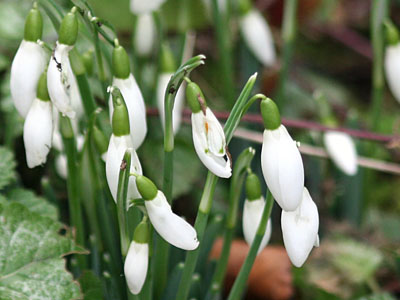
Common Snowdrop Galanthus nivalis
The first sight of the bright white nodding heads of snowdrops peeping through the undergrowth signals that the winter in Wales is coming to an end. They are very hardy plants and the colder the weather, the longer the flowers last, with some flowering into March. The snowdrop, of which there are over 100 varieties, grows from a small bulb and spreads as a result of birds scratching the soil. The flower is milky-white, as indicated by its scientific name, Galanthus (Greek, gala = milk, anthos = flower). There are green markings on the inner petals, which experts are able to use as a means of identification. According to legend snowdrops first appeared when Adam and Eve were driven out of the Garden of Eden, after the Fall of Man, to a land where it was winter: cold, snowy, dark and barren. An angel consoled them by promising that, even here, spring would follow winter. As a token, he blew upon some falling snowflakes which, as they touched the ground, were transformed into snowdrops. In this way, Hope was born. Ever since then, snowdrops have appeared during the bleakest winter weeks as a sign of the better times to come.Common Snowdrop Galanthus nivalis
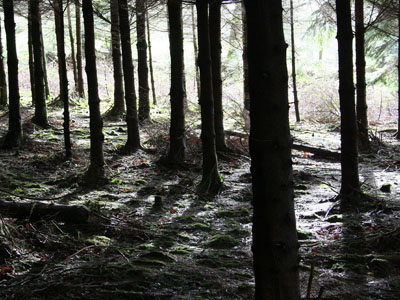
Winter Sun at Plas Farm
The sun is low in the sky during January because the Northern Hemisphere of our planet is tilted away from the sun, which incidentaly we orbit at a speed of 67,000 miles per hour. The low sun creates some very long shadows and on sunny days, the woods at Plas Farm can be very atmospheric. And just think, no matter how leisurely your stroll, you will still be travelling at 67,000 miles per hour.Winter Sun at Plas Farm
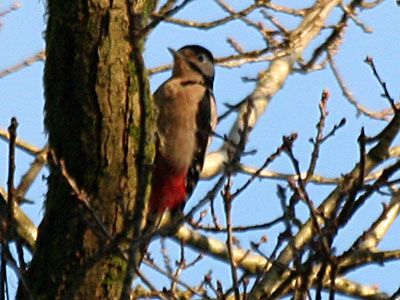
Greater Spotted Woodpecker Dendrocopos major
The woodpecker in this picture was spotted searching for food in an oak tree near the holiday cottages. The bird usually alights on a trunk before working upwards and often from side to side. During the ascent it smartly taps the bark, prising off fragments and frequently extracting food from crevices with the tip of its sticky tongue. The bird also starts 'drumming' in January - a vibrating rattle produced by an extremely rapid rain of blows with the bill onto a suitable trunk. This is not merely a mating call or challenge, but a signal of either sex. If the "sounding board" is of the right condition it may be heard up to a distance of half a mile.Greater Spotted Woodpecker Dendrocopos major
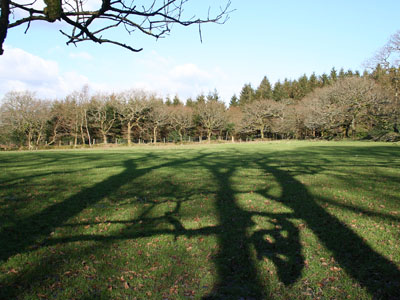
Oak Shadows
This picture was taken on a beautiful clear day in the fields behind the holiday cottages. The sun was low in the sky over Coed Y Brain (The Wood of Crows), helping the oak trees to cast dramatic shadows over the fields. I had to hide within the shadow of the middle trunk to take this picture! Obviously, I had to pull my stomach in slightly.Oak Shadows
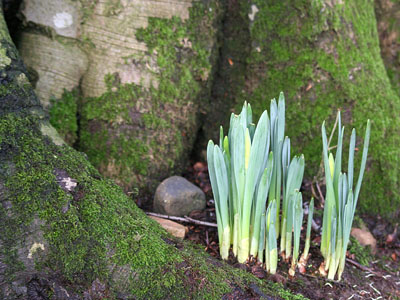
Sprouting Daffodils Narcissus
The daffodil is the national flower of Wales. Its Welsh name is “cennin Pedr” or “cenhinen Bedr,” meaning “Peter’s leek”. There are thousands of different varieties of daffodil. The ones in the picture grow around the base of a huge beech tree on the lawn outside Hafod Y Wennol holiday cottage. By March they will be in full bloom.Sprouting Daffodils Narcissus

Swansea Bay at Night
This picture was taken from the fields at the top of the farm at about one o'clock in the morning. It is the view from Mynydd Marchwyel to the south, out across Swansea Bay. It is possible to see the M4 motorway sweeping along the South Wales coast, and on the left hand side of the picture is the stack of Baglan Bay's 530 MW Power Station, the world's largest and most powerful single-shaft combined-cycle gas fired power station and the first power station capable of breaking the 60% fuel efficiency barrier. It was opened in 2003 and is operated by General Electric Power Systems of the USA. It is possible to make out the lights of Ilfracombe on the Devonshire coastline in the distance and the calm waters of the Bristol Channel in the middle distance. I am not sure but I think the lights to the left of Ilfracombe may be those of Lynton and Lynmouth.Swansea Bay at Night
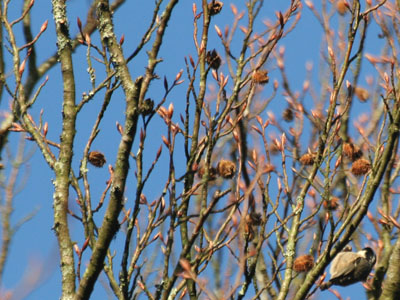
Coal Tit (Parus ater) in Beech Tree (Fagus sylvatica)
Beech nuts are part of the Coal Tit's natural diet. When they are not raiding your bird table, this is what they get up to. There are a few very large specimen beech trees at Plas Farm including three fine examples on the lawn in front of the holiday cottages which are visited regularly by Coat Tits. When food is plentiful, Coal Tits hoard food by hiding it all over the place for later when times are harder. Unfortunately, the Coal Tit's memory is not as great as its ingenuity in finding hiding places and you will often find forgotten sunflower seeds germinating in the most unlikely places! Great Tits can sometimes be seen watching a Coal Tit stashing away its seed and then going to raid it.Coal Tit (Parus ater) in Beech Tree (Fagus sylvatica)
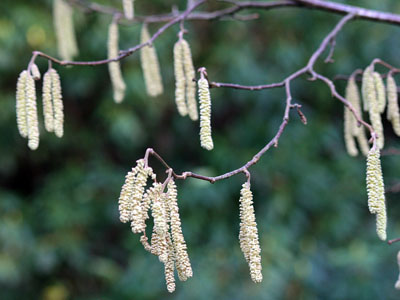
Hazel Catkins Corylus avellana
One of January’s most attractive sights is Hazel catkins in the hedgerows. The flowers are produced before the leaves, and are monoecious (i.e having male and female flowers on the same plant of the same species) The male catkins are pale yellow and 5-12cm long, the female very small and largely concealed in the buds, with only the bright red 1-3mm long styles visible. Hazels are used as food plants by the larvae of various species of butterflies and moths. Devoid of leaves, one can see the tough, flexible branches very well. In days gone by, hazel branches were considered by some to produce the worst-biting 'birch' rods (the official name, even though referring to another species) – an instrument of punishment and torture. Hazel has also been used for fencing, hurdles, barrel hoops, walking sticks, fishing rods, whip handles, ties for fastening thatch, pegs, fuel for ovens, faggots and charcoal for gunpowder, domestic fires and ovens.Hazel Catkins Corylus avellana

Blue Skies at Plas Farm
Have you ever wondered why the sky seems so blue on a crisp January day compared with at other times of the year? Is it because of cooler temperatures? Well, in a word – yes. Cooler days are often due to anticyclonic ‘settled’ conditions meaning that there is a reduction in atmospheric dust conditions. Dust particles produce white dispersion that tends to shift the blue colour to white. In addition, water condenses very close to the ground on cold anticyclonic days leaving the upper atmosphere very dry and clear. I took this picture to illustrate how nice the sky can be at this time of year at Plas Farm. And I was testing my zoom lens. As it happens, the farm lies beneath the main flight path between Heathrow and the United States. On a clear day, several planes may be seen miles high in the sky, silently passing by the Welsh countryside en route to far away lands. Their condensation trails (contrails) stand out against the deep blue January sky. These white trails that form in the wake of an aircraft are made from condensed water vapour - exactly like the clouds that come out of one's mouth on a cold day. If the atmospheric conditions are right, contrails can last for hours and grow to the sixe of a rugby pitch - sometimes they even spread until they turn into cirrus clouds. The only other comment I have about this picture is that the people in the plane have made the schoolboy error of electing to go on holiday to Florida rather than a January cottage holiday in Wales.Blue Skies at Plas Farm
.
January is traditionally the coldest month of the year on average in Wales but as our climate changes, the frosty days get fewer and fewer. January is a great time of year for a holiday in Wales – winter walks and log fires will help you to unwind and make a fresh start after the hectic Christmas and New Year celebrations. Check the Welsh holiday weather for January.
